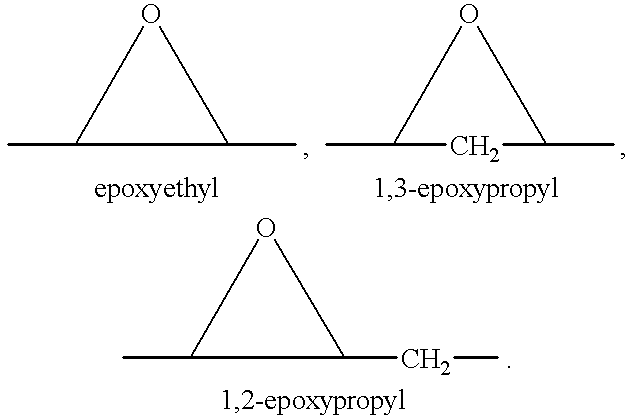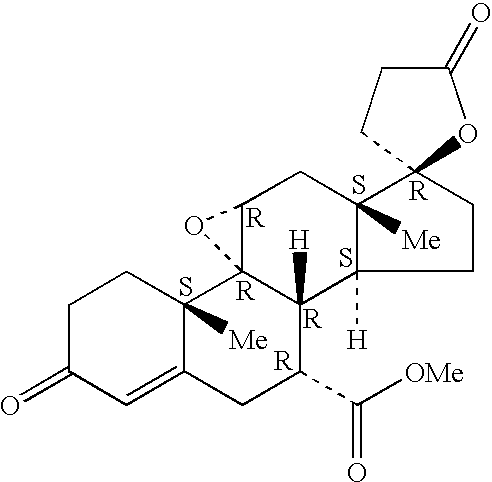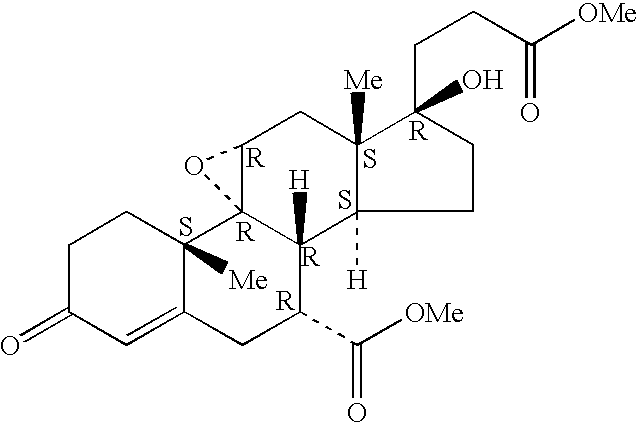Epoxy-steroidal aldosterone antagonist and calcium channel blocker combination therapy for treatment of congestive heart failure
a technology of epoxysteroidal aldosterone and combination therapy, which is applied in the direction of extracellular fluid disorder, metabolism disorder, medical preparations, etc., can solve the problems of major health problems of worldwide proportion, adverse effects of responses on the structure of the cardiovascular system, and myocardial (or cardiac) failure, etc., to reduce pathogenic effects, high aldosterone levels, and high blood pressure
- Summary
- Abstract
- Description
- Claims
- Application Information
AI Technical Summary
Benefits of technology
Problems solved by technology
Method used
Image
Examples
example 2
Preparation of additional solvates from high purity eplerenone starting material
[0229] Additional solvated crystalline forms were prepared by replacing methyl ethyl ketone with one of the following solvents: n-propanol, 2-pentanone, acetic acid, acetone, butyl acetate, chloroform, ethanol, isobutanol, isobutyl acetate, isopropanol, methyl acetate, ethyl propionate, n-butanol, n-octanol, propyl acetate, propylene glycol, t-butanol, tetrahydrofuran, and toluene and carrying out the crystallization substantially as described above in Step A of Example 1.
[0230] Form L eplerenone was formed from each of the solvates substantially as described in Step B of Example 1.
example 3
Preparation of Methyl Ethyl Ketone Solvate by Vapor Diffusion Growth
[0231] Eplerenone (400 mg; greater than 99.9% purity) was dissolved in 20 mL of methyl ethyl ketone by warming on a hot plate to form a stock solution. An 8 mL amount of the stock solution was transferred to a first 20 mL scintillation vial and diluted to 10 mL with methyl ethyl ketone (80%). A 10 mL amount of the stock solution was transferred to a second 20 mL scintillation vial and diluted to 10 mL with methyl ethyl ketone (40%). The final 2 mL of the stock solution was diluted to 10 mL with methyl ethyl ketone (20%). The four vials containing the dilutions were transferred to a dessicator jar containing a small amount of hexane as an anti-solvent. The dessicator jar was sealed and the hexane vapor allowed to diffuse into the methyl ethyl ketone solutions. Methyl ethyl ketone solvate crystals grew in the 80% dilution sample by the next day.
example 4
Preparation of Methyl Ethyl Ketone Solvate by Rotary Evaporation
[0232] About 400 mg of eplerenone (greater than 99.9% purity) is weighed into a 250 mL round bottom flask. Solvent (150 mL) is added to the flask and, if necessary, the solution is heated gently until the solid is dissolved. The resulting clear solution is placed on a Buchi rotary evaporator with a bath temperature of about 85.degree. C. and the solvent is removed under vacuum.
[0233] Solvent removal is stopped when approximately 10 mL of solvent remain in the round bottom flask. The resulting solids are analyzed by appropriate method (XPRD, DSC, TGA, microscopy, etc.) for determination of form.
PUM
| Property | Measurement | Unit |
|---|---|---|
| pH | aaaaa | aaaaa |
| volume | aaaaa | aaaaa |
| volume | aaaaa | aaaaa |
Abstract
Description
Claims
Application Information
 Login to View More
Login to View More - R&D
- Intellectual Property
- Life Sciences
- Materials
- Tech Scout
- Unparalleled Data Quality
- Higher Quality Content
- 60% Fewer Hallucinations
Browse by: Latest US Patents, China's latest patents, Technical Efficacy Thesaurus, Application Domain, Technology Topic, Popular Technical Reports.
© 2025 PatSnap. All rights reserved.Legal|Privacy policy|Modern Slavery Act Transparency Statement|Sitemap|About US| Contact US: help@patsnap.com



